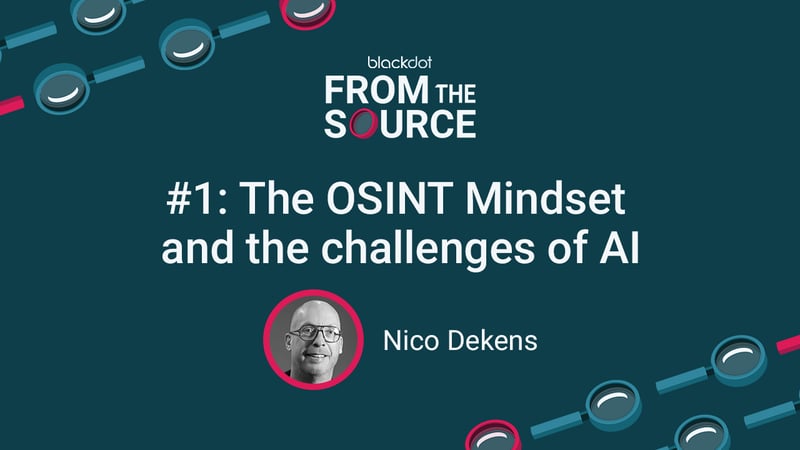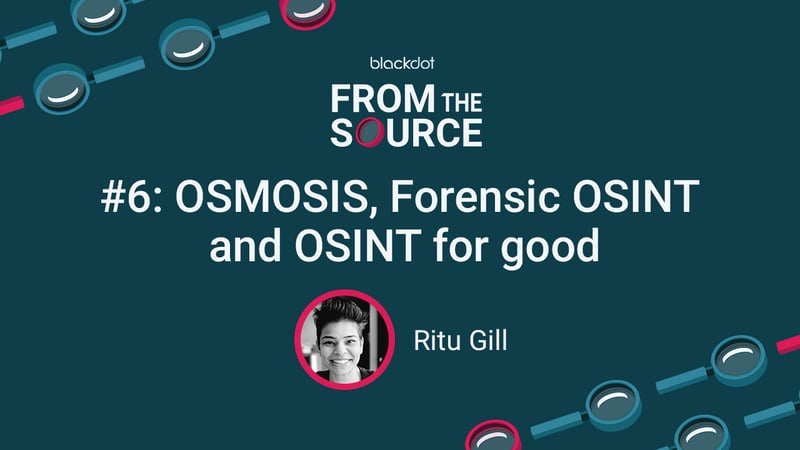Louie Vargas, founder of the Network for Financial Crime Prevention (NFCP), joined the latest episode of From the Source—The Blackdot Podcast.
With more than a decade of experience in financial crime, sanctions, compliance, and payments, we loved hearing Louie’s insight into governance, artificial intelligence (AI), and open-source intelligence (OSINT) in financial crime. Listen to the full episode here: Unlocking the Power of OSINT in Financial Crime.
Louie’s introduction to OSINT
When Louie began his career in compliance over 10 years ago, he was told to add the keyword ‘OSINT’ to his resume. The term was new to him, but he quickly began researching and relying on the helpful OSINT community on LinkedIn, some of whom provide free training, to improve his knowledge. He eventually began working for a Nordic bank that used Blackdot Videris and similar resources. While Louie considers OSINT an excellent tool for investigators, he acknowledges that it isn’t always used to its full potential in financial crime prevention.
“A lot of financial institutions that I've worked for have a separate team that does most of these investigations and deep dives,” he says. “I still think there's a bit of a gap between who knows about these dedicated teams and who doesn’t.”
He adds that those working in investigations teams could educate colleagues about OSINT to expand its use and identify new use cases throughout the business.
Going beyond Google
Louie explains that simply relying on Google searches alone isn’t OSINT, and that the industry needs to focus more explicitly on providing OSINT tools to increase effectiveness in financial crime prevention. However, in scenarios where teams only have a matter of seconds to review transactions, Google is often the best option.
“What we try to say is to have more than one source of the truth,” says Louie, in reference to checking multiple web sources to verify information. “Or, if you have different sources that don't align, that's part of the story.”
In sanctions compliance, time is of the essence because it involves stopping or holding up transactions in real time. Sometimes, they can be delayed for hours, days, or weeks. Not only do investigators need to avoid revealing that they have a potential sanctions matter under review, but delays can also incur interest and become costly to the bank or financial institution. Louie explains that OSINT is therefore most valuable in cases requiring a deeper investigation, not quick decisions. If the risk isn’t clear or a pattern is emerging, investigators must take more time and do more due diligence.
Louie adds that a great use case for OSINT in financial crimes is in geopolitics. He says, “We can predict, to a high percentage, if sanctions are going to be levied on another company, country, or regime.”
Developing the NFCP
Louie started NFCP as a nonprofit organisation in November 2024 as a community of compliance officers.
“When I first moved to the Nordics from the US, I noticed that people were afraid of sharing how they had addressed problems because they thought it was sharing customer information,” he explains. “And of course that's not allowed. But…there's no customer data. We all have the same issue. Why? Because we have the same regulation.”
Louie adds that he wants to educate communities about financial crimes, like fraud, that are prevalent in every jurisdiction. This would require talking with the elderly about scams and youth about money mules and highlighting red flags people may not recognise as nefarious activities.
AI in OSINT
“AI is just an umbrella term,” explains Louie. “But there are different parts like machine learning (ML), large language models (LLMs), and more.”
When it comes to AI in OSINT, Louie says its status depends on who you are speaking to and their interpretation or definition of AI. So, it is essential to talk about the specific parts that are relevant to you. He adds that governance is a key consideration, especially with the EU AI Act, which provides much-needed structure and helps AI users understand high, medium, and low-risk AI setups.
“Just like in everything else, I think there is a way to harness the power of AI in a way that could make our lives as investigators and compliance officers easier,” says Louie. “But we also need to consider the governance that needs to be in place to ensure there's no biases and you have a constant oversight of how your model is working, so that you can ensure that the model is working as you intended it to work.”
Listen to Unlocking the Power of OSINT in Financial Crime with Louie Vargas in full and stay tuned for even more OSINT insight on Blackdot’s next podcast episode.



